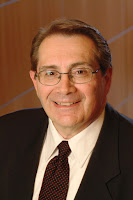By John Mattison
Chief Medical Information Officer
Assistant Medical Director
Kaiser Permanente, SCAL
The ascent of rapid innovation is changing our culture and planet in historic proportions. The exponential pace of innovation challenges our imagination, and it’s often a matter of how quickly we can introduce radical change. As every institution races to create or enhance their innovation programs, there are several avoidable pitfalls. Institutions whose primary mission is operational services, such as healthcare, appear to be at higher risk of these pitfalls. The skills and experience required for high performance are not necessarily abundant, and recruiting experienced talent is difficult. Further, existing incentive models within healthcare can clash with models better suited for rapid innovation. This brief reports highlights common pitfalls and is not intended to be comprehensive.
Focusing On The Principles—And Pitfalls—Noted Below Can Help You To Manage the Inherent Risks in Institutional Innovation:
- Confusion of ideation with innovation. Generating large portfolios of ideas without aligning them with strategic priorities is hazardous.
- ‘Spray and Pray’ approach (aka acute and chronic pilotitis): Assuming that a few big successes will emerge out of a plethora of innovation pilot projects is risky. While this strategy may appear similar to early phase Venture Capital portfolios, healthcare institutions generally don’t have the variety and flexibility of capital investment vehicles available to entrepreneurs in the open market. When many innovation projects ‘fail’ it can discourage intrapraneurs, strategic partner entrepreneurs, and the overall culture of innovation.
- “Vision without action is a daydream. Action without vision is a nightmare." – Japanese Proverb
2) Principle: Dedicate the right resources
(People, Processes, and Technology)
- Confusing enthusiasm for competence. Enthusiasm is necessary but not sufficient. Skillful support resources are critical to channel that enthusiasm.
- Delay in securing effective sponsorship: Securing sponsorship can be more difficult later in the life cycle, when it is most needed.
3) Principle: Understand the full life cycle of innovation from ideation to scale
- Premature death of early pilots: Every innovation follows certain patterns during the evolutionary life cycle of iteration and enhancement, but each one also has its own unique pathway. It is critical to recognize milestones that warrant a transition in approach or resources to progress through the next stage and eventually reach scalable solutions.
- Underestimating the time needed for success: Some innovations can be completed in months, but many require many years. Recognizing when more time will help or not is critical. As Einstein said, “Innovation is 1% inspiration and 99% perspiration”.
4) Principle: Exploit platforms (especially open modular and open source):
- Allowing innovation to occur across competing platforms is unnecessarily costly for both initial development and support. Furthermore, downstream integration of user experience is impaired when ‘platform jumping’ is required.
5) Principle: Fail early, adjust, iterate, and remove ego from learning
- Innovation is increasingly a team sport, relying on acquiring skills and resources from across the multi-platform ecosystems or ‘plecosystem’. Teams must embrace the tension of conflicting ideas. Celebrating success is helpful unless it focuses too much on individuals. A focus on individual credit risks individual blame and impedes the critical pace of rapid iteration.
6) Principle: Empathic design (a user-centered design approach focused on
the user's feelings toward a product)
- Failure to distinguish empathic design from democratic design is dangerous. Leadership and support is critical to avoid design by consensus. Consensus-bound decisions often threaten the best opportunities.
7) Principle: Recruit key leadership with deep experience in innovation
- Versatility in experience and leadership: Large institutional models of promoting leaders often focus disproportionately on political skills at the expense of more basic entrepreneurial skills and track records of success. Versatility is critical in any leadership role for innovation. Since different types of innovation require different approaches and skills, knowing what skills, resources, and processes to apply at different project stages is critical. A single innovation success is not a sufficient predictor of versatile leaders.
- Critical review of candidate resumes: Key leadership must have experience across the full life cycle of multiple innovations. Beware of resume claims of multiple successes when each success requires more time than the tenure of that individual in their role on that project.
- Avoid the “articulate incompetent”. The CEO of a large tech company once described this term and her series of screening and interview tools to determine whether the representations made by a candidate were justified by the evidence for those claims. She attributed her low employee turnover rate to this thorough screening process.
8) Exploit and spread existing internal successes
- Overlooking existing successes is a serious hazard, and reflects both “not-invented-here” as well as competition between institutional silos. Applying ‘positive deviance’ as a discipline will bear many fruits.
Each of the above pitfalls is compounded by the presence of any other. The most critical asset to prevent these problems is to select leaders who already have established track records of several successes over the full life cycle of ideation, prototypic iteration, operationalization, funding, and scale. Once these uncommon skillsets are recruited, they can be effectively leveraged across the innovation infrastructure. Avoiding these pitfalls not only saves money, but more importantly avoids lost time in a world where rapid disruptive innovations are increasingly necessary to just stay ‘in the game’.








